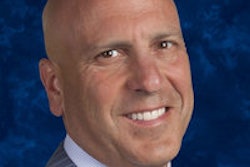
LAS VEGAS - During a presentation on restoratives at the ADA's Annual Session on Tuesday, Gordon Christensen, DDS, MSD, PhD, didn't hold back.
"One thing I'll look at is the white stuff [nonmetals] in restorative dentistry," he said during the opening of the Christensen Bottom Line 2011. "Does it perform as well as the gold stuff? I'll tell you candidly that it doesn't."
The shift in materials favored for crowns received particular focus during the first part of his talk. Dr. Christensen shared conclusions that his nonprofit product-testing facility in Provo, UT, had reached about many of them.
He had strong words for what he termed "this white crown business." Of them, he said, "metal crowns of the past are far superior."
Nonetheless, dental practitioners continue to embrace the newer materials. According to data from Glidewell Laboratories, "Metal is dying," Dr. Christensen said. Metal has gone from 12% of all crowns placed from 1997 to 2010 to 5.6% in the year 2010. Porcelain-fused-to-metal (PFM) crowns went from 72% to 49% in the same period. Meanwhile, all-ceramic and composites went from 16% to 49.5%.
“We're getting back to our roots.”
— Gordon Christensen, DDS, MSD, PhD
His skepticism was plain as he deconstructed the reasons all-ceramic restorations are being chosen.
"The strength of some types appears to be better than in the past," Dr. Christensen said. "But I have a whole drawer of broken crowns. I keep them there to keep me humble."
Nearly 5% of PFMs fail after 10 years, he noted, while many ceramic and composites fail after one.
"When you put a restoration on a patient who is 30, it's going to fail," Dr. Christensen said. "You will replace it."
Then he asked who in the audience had had to cut off a full-zirconia crown. With many hands in the air, he quipped, "You still look tired!"
He dismissed most of the burrs designed for cutting zirconia.
"Our research shows you're better off with a $1 diamond," Dr. Christensen said. "A diamond from Microcopy called Neo is one that continues to prove itself." It comprises extremely sharp diamond pieces leftover from the ring-making process, he explained.
Varnish's 'dirty little secret'
Dr. Christensen also had a specific recommendation for a fluoride varnish.
"My wife and I tested 19 varnishes and found a dirty little secret," he said. "Most of them are made by VarnishAmerica, and they kept the best one for themselves."
While other varnishes tend to leave a brown, yellow, or snow white film on teeth, VarnishAmerica's 5% sodium fluoride varnish is clear, he noted.
Dr. Christensen then turned his attention to patient referrals, noting that with other medical professions referring patients to dentists, there is often a "serious lapse."
"There are two major things that they really screw people up on: heavy chemotherapy and heavy radiation treatment," he said. "Dentists should remove the teeth that won't stand a chance" following those cancer treatments.
Patients who undergo bisphosphonate treatment should also see a dentist prior to beginning treatment for the same reasons, he said.
When it comes to weathering the current economic storm, Dr. Christensen emphasized the need for broader patient education.
"For success, you and I need to educate patients," he said. "Let them know that they need that [treatment] more than a new dress or a new car."
When it comes to potential growth areas in dentistry, implants top the list, according to Dr. Christensen. Aesthetic dentistry is still growing, but differently than in the past.
"It isn't putting 16 veneers on 16-year-olds," he said. "Prior to the recession, there were 48 million crowns placed each year; right now, there are 38 million annually. That's a heck of a difference."
However, he added, this shift is having positive side effects, particularly since dentists are trending back toward conservative dentistry.
"That's a good thing," Dr. Christensen said. "We're getting back to our roots: maintaining the health of the tooth."



















